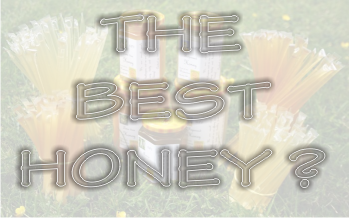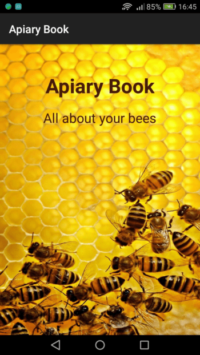Somebody asked me once what is the best honey in the world. I said there is no such thing, and then I read about contests called “The Best Honey”. So maybe just being raw is not enough? Which is the best honey in the world?
From where comes the reputation of Romanian honey? Why is it so appreciated?
In June 2014, China’s Minister of Agriculture decided to find out the answer and paid Romania a visit. We are talking about China, the country with the biggest production of honey in the world!
The Chinese minister visited a small village, Udresti, and talked to Viorel Iosif, the secretary of Federation of Beekeeping Associations of Romania – Romapis, a beekeeper from father to son. He has only 100 hives, but produces a highly appreciated honey, which was so interesting for the Chinese dignitary.
We notice the honesty of the minister, who recognized that the quality of his country’s honey was way under the Romanian honey. What is the mystery? It couldn’t be only in the nectar the bees gather, so it had to be something connected to the way the bees were kept. This explained his personal visit.
 |
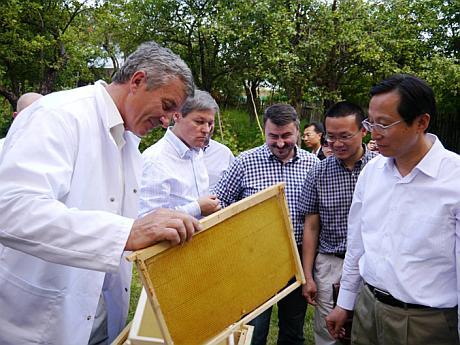 |
The 61 years old beekeeper relates how he offered his visitors some honey and pollen and the bees were respectful enough not to sting anybody! 🙂
China represents 40% of the world honey production. But it’s of low quality. Would Romania going to export honey to the biggest honey producing country? It’s hilarious… Yet, it happened. In 2015 a company from Baicoi, owned by a 75 years old beekeeper sold 15 tons of honey to China. They asked more analyses than the usual number of analyses asked by any European country. Paid for them, too. And then, bought. A lot.
Viorel Iosip is also selling his honey to Germany, a country that “hunts” especially organic honey. Before buying it, they send it to their laboratories, in Germany, for 28 analyses that cost like 600 to 700 euros. Then, after they are convinced of the honey’s purity, the transaction is done – the Romanian beekeeper explains. He produces only 1.5 tons of honey per year, and the request is way too much for his 100 hives.
His best honeys are: sunflower honey, rapeseed honey, linden and acacia honey.
In 2015, Romania has exported 50% of its total honey production. To Germany and Spain and other nordic countries of Europe, which are well known to consume a lot of honey, to China and to other eastern countries.
Romania produces on average 20,000 tons of honey annually, ranking fourth in Europe and last year there were around 40,000 beekeepers with 900,000 bee colonies. Yes, a small country, but a nation of beekeepers.
The most appreciated honeys of Romania: honeydew honey, rapeseed honey, sunflower honey and acacia honey.
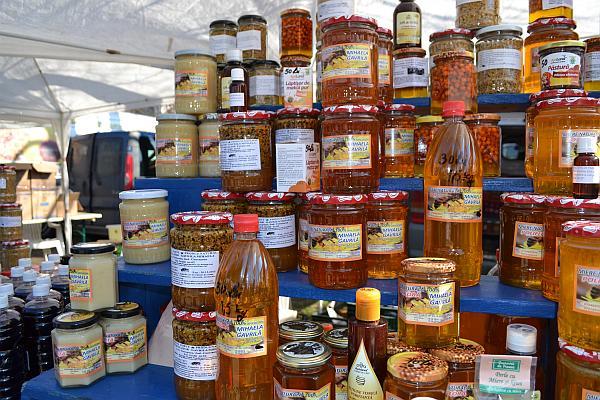
Where can we find Romanian honey?
There are lots of Romanian beekeepers who chose to sell their honey in other countries. Here is Dorulet Stancu from Happy Hive, who sells raw, unfiltered, high quality honey in Ireland. He started selling at the back of his car, but his honey was so appreciated, that things changed very quickly. Take a look:
 |
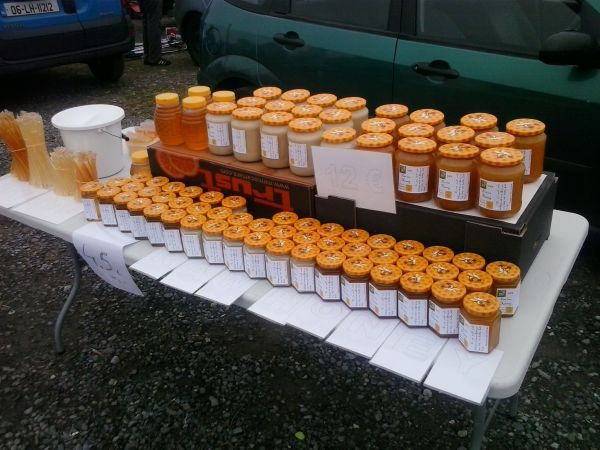 |

You can always contact him if you want some good quality honey:
Dorulet STANCU
The Happy Hive
buyrawhoney@gmail.com
facebook page
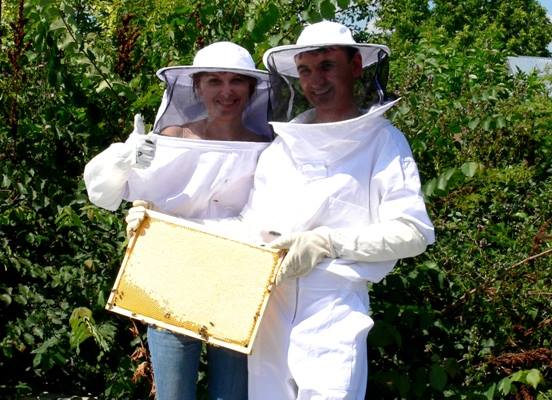
And here is another Romanian beekeeper, Mihai Grama, who sells 1 kg of honey with 35 euros! – His honey comes from the depths of Carpathian forests, made by the wild Carpathian honey bees – which he hunt and domesticate.
It cannot get more raw than this! 🙂
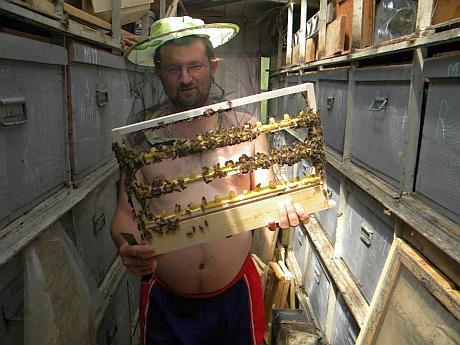
Amazon.co.uk also sells Romanian honey. See here:
Raw Health Organic Squeezy Romanian Acacia Honey 350 g (Pack of 2);
or here, a jar of Romanian honey which was packed in Hungary: Honeycomb Acacia Clear Honey – Romanian 454g
What’s the secret of such a good honey?
The passion for it. It’s not only about the type of flower, soil and weather. It also depends on the extraction and processing. Here are some tips shared by dr. Petre Iordache and his wife Veronica Mîndru Mara, from Apiflora, who won the contest of “the best honey” at the following categories: “Best Locust Honey”, “Best Lime Honey” and “honey specialties.”:
- do not use the frames that were already used for growing eggs, because when the bees goes out of the cells, a certain “shirt” will remain in the cell. This contains substances that may alter the taste of honey.
- The honey is extracted only manually, using a centrifugal device. The filter is done using 2 sieves, one provided with holes larger and one with smaller holes, and it is used only the gravitational force for this. Honey is not drastically filtered, and pollen grains will still remain in the honey, giving flavor and color. Not to mention the health benefits of it.
- Pay increased attention to breeding queens. There is a lot of literature, but to put into practice everything you read is a long way. There will be many hindrances that only practice can help you overcome.
- Here is another secret, known from a grand grand father, shared with all beekeepers by Alexandru Nicoara, on his blog:
Bread with onion and garlic.
It’s a special bread used to feed and stimulate queens. It is given as a stimulent at the end of autumn or in spring. You’ll need the following ingredients:
10 kg powdered sugar
0.3 kg onion finely ground (blender or juicer)
0.3 kg of finely ground garlic
0.5 fine cornflour
2 kg honey
10 packs of lemon salt (8 grams each)
100 grams inactive dry yeast
Mix all ingredients until you get a smooth composition. Then put it in plastic or paper bags, and close them making sure there is no air left inside (as much as possible). Prick the bags with the bread inside or scratched them with a fork and then place them over the frames, with the scratched surface facing the frames.
The bags will have like 1 kg, from the total amount of 13 kg which is obtained, and it will be enough for 13 hives. The onion and the garlic will prevent lice breeding. Besides this natural treatment against the Varroa lice, the beekeeper uses fumigation with Varachet and mavrirol bands. But because of these breads there will be more eggs and the bees will live longer.
Be very careful and do not exceed the 50 gr onion and garlic juice at 1 kg of cake, otherwise the effect will be opposite than desired.
There are dozens of recipes available, each beekeeper experimented till finding the best solution for his bees. And if you manage to find a way, stick with it and don’t try to push further and improve “the best” – it will inevitably go wrong.
“Love the bees and respect them!
Even more, love and respect the people who’re going to eat that honey!
Offer them quality!”
**********
**********
Pictures and info references:
http:// agrointel.ro/24404/povestea-mierii-care-l-a-indulcit-pe-ministrul-agriculturii-din-china-viorel-iosif-apicultor-a-venit-la-noi-in-stupina-sa-vada-cum-se-cresc-albinele-in-romania/
http:// agrointel.ro/31097/cea-mai-buna-miere/
Mihai Ganea -picture source and info references: http://agrointel.ro/30597/cel-mai-bun-pret-mierea-romaneasc-cluj/

